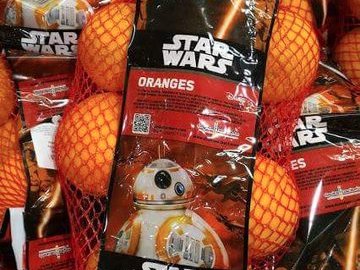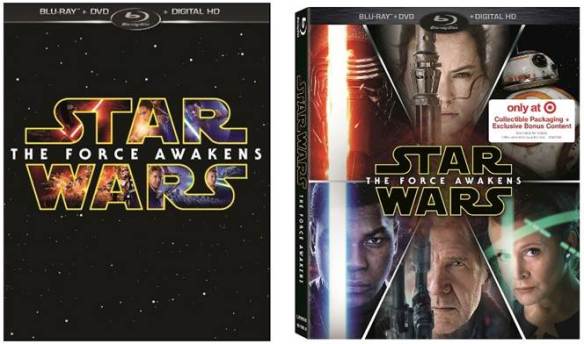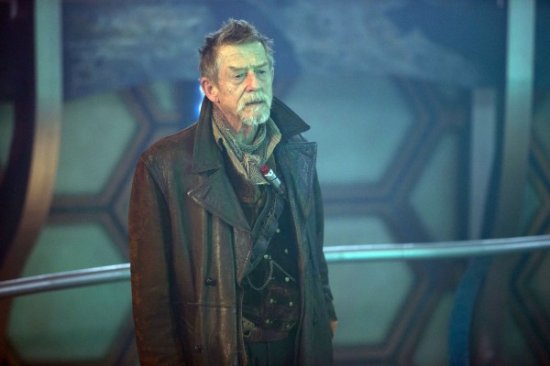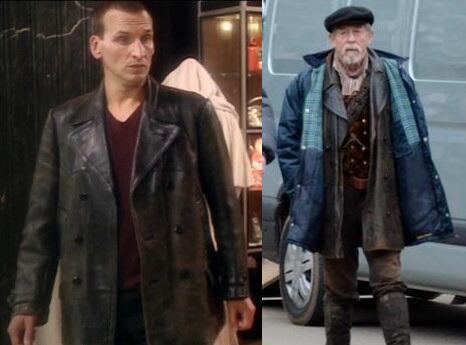While perusing the comment section of the recently posted video of Hong Kong Disneyland’s Mystic Manor I came across the following question: “What will it take for Imagineering to produce an original E-Ticket attraction at Disneyland or Walt Disney World?”
Allow me to translate for those readers scratching their heads and asking themselves “Didn’t Disney just open an entire new land in California?!”.
What the commentator means to ask is “What will it take for Imagineering to build attractions that tell new stories in the United States?”.
The person is bemoaning the oft-repeated gripe: Long gone are the days of the Pirates of the Caribbean style attractions; built for the sole purpose of telling entertaining new stories.
But that’s not entirely true – as I’ll point out in a moment.
It would appear that Disney is operating under the impression that there is absolutely zero reason to build a new attraction on an untested intellectual property. This is not an unfounded theory. I assume that fueling this opinion are their carefully researched points outline below:
- Low Risk. Recently added attractions are based on properties with proven financial success (Toy Story, Little Mermaid, Cars).
- Familiarity. They contain characters already familiar to an American audience that resists change or chafes at learning anything new.
- Popularity. The newly added attractions based on existing properties are quite popular (regularly commanding 45+ minute waits).
Building a new E-Ticket attraction isn’t getting any cheaper – and Disney wants to hedge their bets on a sure thing. They want the most bang for the buck. What better way to ensure low risk and popularity than to build an attraction around a beloved property?
Let me state the point regarding familiarity from another angle: When you’re far away from home are you more willing to try a new restaurant or an existing franchise? What do you think the vast majority of Americans say?… and before you answer please understand that there are more than 34,000 McDonalds for a reason.
In order to see it from Disney’s point-of-view, let’s quickly examine the four most recent attractions that were not based on any existing intellectual properties.
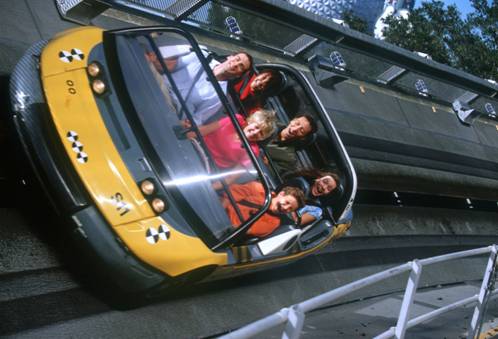
Test Track (1999, $200 million) was ridiculed before it even had a chance to open; mainly because of how long it took Disney to work through a particularly rough test-and-adjust phase of a new ride system. After it opened people complained that it was boring – less thrilling than the actual drive to the park. 14 years later a slower version of the same ride opens in California with a Cars overlay and it’s the best thing since audio-animatronics. The Epcot original gets a Tron-inspired overlay and suddenly all is forgiven.

Soarin’ (2001, $3.5 million) is still a massive success today and may be our one bright spot in this list. It’s relatively inexpensive to build (when compared to the rest on the list) and popular with guests. As far as ROI is concerned, Disney’s certainly making an impressive profit on this one. However, I would argue that this attraction introduces no new characters and doesn’t attempt to tell a story.
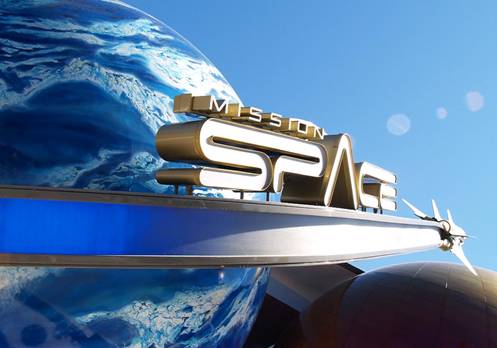
Mission: SPACE (2003, $100 million) received scathing media coverage. The most often repeated story was that this attraction could kill you. Those unaffected by the ride’s apparent dangerous ride system claimed it was nothing more than a slick spinner ride. Others complained about everything from Gary Sinise’s poor acting to the unimaginative queue. Meanwhile, Disney spent millions retooling the attraction; yet the media would not relent. Eventually, in order to appeal to the media and an American audience who had not (would not) ride the attraction, Disney turned off most of the thrilling (and expensive) effects for half of the ride vehicles. Today, we’re left with a $100 million ride that half-operates.

Finally, we have Expedition Everest (2006, $100 million). Of the four, it is the only attraction that introduces any new/memorable characters and attempts to tell a real story. It’s richly themed, fun, thrilling and insanely popular. There’s just one hitch: a few months after opening it broke. Not the whole ride, mind you – just the footings for the Yeti animatronic; which have cracked in a horrifically un-repairable way. What’s Disney to do with a brand new multi-million dollar attraction that regularly services 18,000 thrill-seekers per day? Well, they ask maintenance to leave the beast in a menacing pose and aim a strobe light at him (casually referred to as “B-mode” by Team Disney). Fixing the ride would require Disney to tear open the mountain façade and carefully remove sections of track just to get to the Yeti. Why would Disney risk taking a popular ride off the grid when, even when it’s broken, it still commands the longest lines in the park. Apparently a major, non-working, story-driven effect just isn’t that important to visitors. It’s certainly not driving them away.
Okay, so Disney hasn’t had very good luck locally with original attractions. What makes them think they should try adding them to Hong Kong, instead?
For starters, the Government of Hong Kong owns 52% of Hong Kong Disneyland. I’d imagine they have a lot of say in what attractions get green-lit for their park. The Walt Disney Company has the ultimate vote in what goes into their own stateside parks. The same cannot be said at any of the parks outside the US borders (Tokyo Disney and DisneySea are mostly owned by The Oriental Land Company and Disneyland Paris is mostly owned by European shareholders and Saudi Prince Alwaleed). When someone else is footing the bill… you’re obligated to do what they say.

Disney has worked very hard at localization – meaning, they haven’t just dropped exact copies of Disneyland onto Europe and Asia. They have wisely chosen to research the local cultures, customs, history and traditions before even developing the layout of the parks. Ask yourself, what reference do the Asian people have to the late-1840s American west gold rush?… other than being imported for slave labor on railroad lines. Do their customs and traditions include the same fantasy and folklore that Americans immediately understand? How would the Chinese, who respect and honor their dead elders, react to the graveyard scene in our beloved Haunted Mansion?
Disney’s careful research has lead them to replace Hong Kong’s Frontierland with Grizzly Gulch and Tokyo’s Main Street USA with the World Bazaar. Most excitedly, the upcoming Shanghai Disneyland’s Main Street will be replaced with an abbreviated avenue that opens onto a spectacular 11-acre garden hub. I can’t wait to see how this plan is realized!

Finally, what’s Disney to do when they realize that the Asian audience could really care less about Disney’s back-catalog of characters. This was made evident to Bob Iger at the opening of Hong Kong Disneyland (2005). As the story goes, Bob was on stage watching the parade go by; but also paying close attention to the guests. Floats carrying Mickey, Pluto, Belle, Peter Pan, Cruella DeVil, and a host of other classic characters were all met with polite applause. Then the Toy Story parade unit arrived… and the crowd went wild.
In 2006 Disney bought Pixar.
For a company looking to aggressively expand into the Asian market this was a very wise move.
How does Disney provide what the consumer wants when the consumer has a cool reaction to 75 years of material? Use Pixar where you can… then develop new stories for the other attractions.
So, in short, what will it take for Imagineering to develop attractions based on stories that have not already been films? Probably, a measurable (and sustained) drop in attendance coupled with a dramatic shift in how American’s consume classic content. And I don’t see that happening any time soon.

